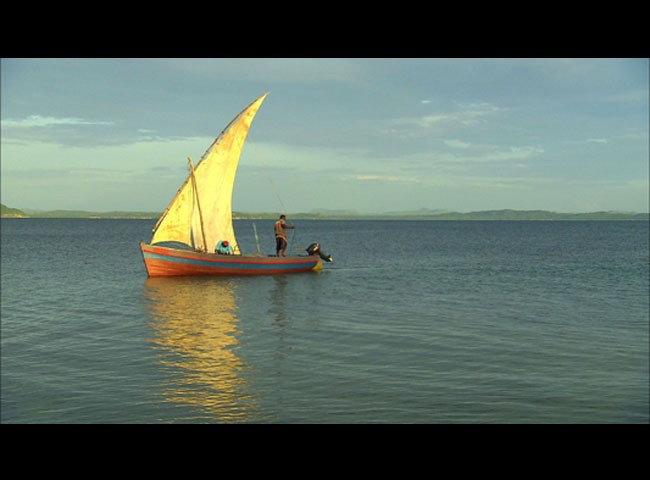Madagascar, au pays des Antankaranas
-
Réalisé par Patrick Profit • Écrit par Patrick Profit
-
France • 2009 • 52 minutes • Vidéo HD • Couleur
- Réalisation :
Patrick Profit - Écriture :
Patrick Profit
- Production (structure) :
Atmosphère Production - Ayant droit :
Atmosphère Production
- N° ISAN :
ISAN 0000-0002-2DA8-0000-P-0000-0000-0
Résumé
Le Nord de la Grande Ile serait-il une entité à part ? Certains dont je fais partie le pensent. D’abord, cette région fut coupée pendant longtemps du reste de Madagascar. Son isolement était dû à la route difficilement praticable qui traverse la barrière naturelle du massif volcanique de Tsaratanana. Mais ce qui en a fait surtout sa particularité, c’est certainement l’autonomie affichée de sa population "les Antankaranas", que l’on nomme aussi "Ceux du rocher" Les Antankaranas peuplent le massif de l’Ankarana. Ce plateau rocheux né sous la mer il y a des millions d’années, étend son réseau de grottes, de rivières souterraines et de canyons au milieu de forêts sèches et vertes de la ville d’Ambilobe à la pointe la plus extrême du pays, le Cap d’Ambre. Mais l’Ankarana a surtout un rôle traditionnel et culturel pour sa population de tout premier plan. Historiquement les «Antankarana » sont sans doute le peuple ayant opposé l’une des plus farouches résistances face à la domination Merina. Au XIX ème siècle, le roi Radama I, à la tête d’une force de réunification se heurte aux défenses naturelles des imprenables tsingy d’Ankarana car ce labyrinthe de calcaire, qui abrite de nombreuses grottes, servait de refuge aux Antankarana.
Could the North of the "Grande Ile" be its very own entity? Some, as I do, believe this to be true. First, this region was cut off from the rest of Madagascar for a very long time. Its isolation was due to its impractical route that crossed the natural volcano barrier of Tsartanana. But what most makes it uniqueness is its independence showcased thru its people, the "Antankaranas", who are also called "The people from the rock". The Antankaranas populate the massif of the Ankarana. This rocky plateau, born under the sea millions of years ago, spreads its field of grottos, underground rivers, and canyons in the middle of dry green forests in the city of Ambilobe, to the highest point of the country, which is the "Cap d´Ambre". But the Ankarana mostly holds a traditional and cultural role for its people. Historically, the "Antankarana" are probably the people who had opposed the most barbaric resistance ever, faced with the Merina domination (ou "take-over"?) In the XIXth century, King Radama I, who was at the head of a reuniting force, came face-to-face with the natural and untameable defences of the Tsingy of Ankarana, because this limestone labyrinth, housing numerous grottos, served as shelter the Antankarana...
Mot(s)-clé(s) thématique(s)
Comment avoir accès au film ?
-
Édition DVD
- Il n'existe pas d'édition DVD à notre connaissance
-
Accès VOD
- Il n'existe pas d'accès en VOD à notre connaissance
- Distribution
- Aide sur les moyens d'accéder à un film
